NAD+-boosting therapy alleviates nonalcoholic fatty liver disease via stimulating a novel exerkine Fndc5/irisin
- PMID: 33754067
- PMCID: PMC7977447
- DOI: 10.7150/thno.53652
NAD+-boosting therapy alleviates nonalcoholic fatty liver disease via stimulating a novel exerkine Fndc5/irisin
Abstract
Rationale: Nicotinamide adenine dinucleotide+ (NAD+)-boosting therapy has emerged as a promising strategy to treat various health disorders, while the underlying molecular mechanisms are not fully understood. Here, we investigated the involvement of fibronectin type III domain containing 5 (Fndc5) or irisin, which is a novel exercise-linked hormone, in the development and progression of nonalcoholic fatty liver disease (NAFLD). Methods: NAD+-boosting therapy was achieved by administrating of nicotinamide riboside (NR) in human and mice. The Fndc5/irisin levels in tissues and blood were measured in NR-treated mice or human volunteers. The therapeutic action of NR against NAFLD pathologies induced by high-fat diet (HFD) or methionine/choline-deficient diet (MCD) were compared between wild-type (WT) and Fndc5-/- mice. Recombinant Fndc5/irisin was infused to NALFD mice via osmotic minipump to test the therapeutic action of Fndc5/irisin. Various biomedical experiments were conducted in vivo and in vitro to know the molecular mechanisms underlying the stimulation of Fndc5/irisin by NR treatment. Results: NR treatment elevated plasma level of Fndc5/irisin in mice and human volunteers. NR treatment also increased Fndc5 expression in skeletal muscle, adipose and liver tissues in mice. In HFD-induced NAFLD mice model, NR displayed remarkable therapeutic effects on body weight gain, hepatic steatosis, steatohepatitis, insulin resistance, mitochondrial dysfunction, apoptosis and fibrosis; however, these actions of NR were compromised in Fndc5-/- mice. Chronic infusion of recombinant Fndc5/irisin alleviated the NAFLD pathological phenotypes in MCD-induced NAFLD mice model. Mechanistically, NR reduced the lipid stress-triggered ubiquitination of Fndc5, which increased Fndc5 protein stability and thus enhanced Fndc5 protein level. Using shRNA-mediated knockdown screening, we found that NAD+-dependent deacetylase SIRT2, rather than other sirtuins, interacts with Fndc5 to decrease Fndc5 acetylation, which reduces Fndc5 ubiquitination and stabilize it. Treatment of AGK2, a selective inhibitor of SIRT2, blocked the therapeutic action of NR against NAFLD pathologies and NR-induced Fndc5 deubiquitination/deacetylation. At last, we identified that the lysine sites K127/131 and K185/187/189 of Fndc5 may contribute to the SIRT2-dependent deacetylation and deubiquitination of Fndc5. Conclusions: The findings from this research for the first time demonstrate that NAD+-boosting therapy reverses NAFLD by regulating SIRT2-deppendent Fndc5 deacetylation and deubiquitination, which results in a stimulation of Fndc5/irisin, a novel exerkine. These results suggest that Fndc5/irisin may be a potential nexus between physical exercise and NAD+-boosting therapy in metabolic pathophysiology.
Keywords: Fndc5; NAD+; SIRT2; irisin; nonalcoholic fatty liver disease; physical exercise.
© The author(s).
Conflict of interest statement
Competing Interests: The authors have declared that no competing interest exists.
Figures
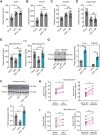
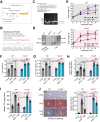


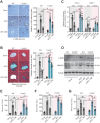




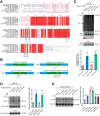
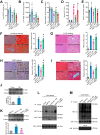

Similar articles
-
Fibronectin Type III Domain-Containing Protein 5 rs3480 A>G Polymorphism, Irisin, and Liver Fibrosis in Patients With Nonalcoholic Fatty Liver Disease.J Clin Endocrinol Metab. 2017 Aug 1;102(8):2660-2669. doi: 10.1210/jc.2017-00056. J Clin Endocrinol Metab. 2017. PMID: 28472477
-
Hepatic FNDC5 is a potential local protective factor against Non-Alcoholic Fatty Liver.Biochim Biophys Acta Mol Basis Dis. 2020 May 1;1866(5):165705. doi: 10.1016/j.bbadis.2020.165705. Epub 2020 Jan 27. Biochim Biophys Acta Mol Basis Dis. 2020. PMID: 32001301
-
Exerkine fibronectin type-III domain-containing protein 5/irisin-enriched extracellular vesicles delay vascular ageing by increasing SIRT6 stability.Eur Heart J. 2022 Nov 14;43(43):4579-4595. doi: 10.1093/eurheartj/ehac431. Eur Heart J. 2022. PMID: 35929617
-
The potential role of FNDC5/irisin in various liver diseases: awakening the sleeping beauties.Expert Rev Mol Med. 2022 Jun 13;24:e23. doi: 10.1017/erm.2022.19. Expert Rev Mol Med. 2022. PMID: 35695040 Review.
-
NAD+ and NAFLD - caution, causality and careful optimism.J Physiol. 2022 Mar;600(5):1135-1154. doi: 10.1113/JP280908. Epub 2021 May 27. J Physiol. 2022. PMID: 33932956 Review.
Cited by
-
Irisin Preserves Cardiac Performance and Insulin Sensitivity in Response to Hemorrhage.Pharmaceuticals (Basel). 2022 Sep 27;15(10):1193. doi: 10.3390/ph15101193. Pharmaceuticals (Basel). 2022. PMID: 36297305 Free PMC article.
-
Aging and aging-related diseases: from molecular mechanisms to interventions and treatments.Signal Transduct Target Ther. 2022 Dec 16;7(1):391. doi: 10.1038/s41392-022-01251-0. Signal Transduct Target Ther. 2022. PMID: 36522308 Free PMC article. Review.
-
Peroxisome proliferator-activated receptor γ coactivator 1α maintains NAD+ bioavailability protecting against steatohepatitis.Life Med. 2022 Aug 17;1(2):207-220. doi: 10.1093/lifemedi/lnac031. eCollection 2022 Oct. Life Med. 2022. PMID: 39871927 Free PMC article.
-
Emerging strategies, applications and challenges of targeting NAD+ in the clinic.Nat Aging. 2025 Sep 9. doi: 10.1038/s43587-025-00947-6. Online ahead of print. Nat Aging. 2025. PMID: 40926126 Review.
-
Metabolic factors are not the direct mediators of the association between type 2 diabetes and osteoporosis.Front Endocrinol (Lausanne). 2024 Jul 25;15:1404747. doi: 10.3389/fendo.2024.1404747. eCollection 2024. Front Endocrinol (Lausanne). 2024. PMID: 39119008 Free PMC article.
References
-
- Anstee QM, Targher G, Day CP. Progression of NAFLD to diabetes mellitus, cardiovascular disease or cirrhosis. Nat Rev Gastroenterol Hepatol. 2013;10:330–44. - PubMed
Publication types
MeSH terms
Substances
LinkOut - more resources
Full Text Sources
Other Literature Sources
Medical
Molecular Biology Databases

